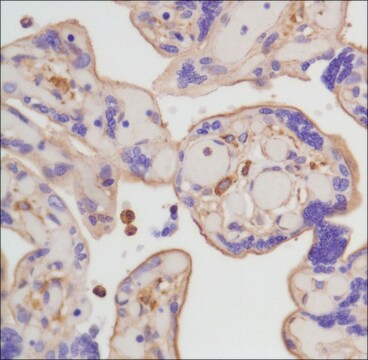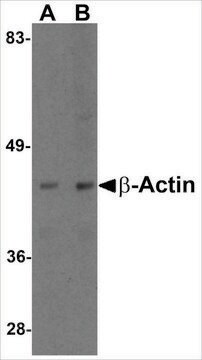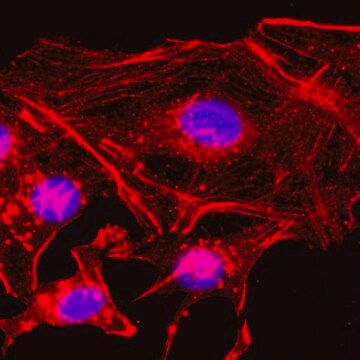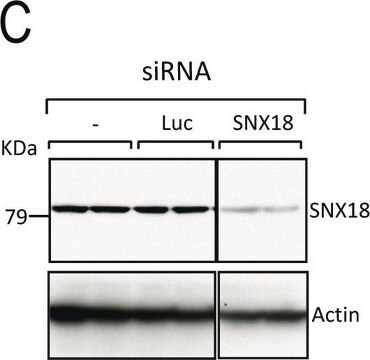ABT264
Anti-beta Actin Antibody, arginylated (N-terminal)
from rabbit, purified by affinity chromatography
Sinónimos:
Actin, cytoplasmic 1, arginylated, beta Actin, arginylated
About This Item
Productos recomendados
biological source
rabbit
Quality Level
antibody form
affinity isolated antibody
antibody product type
primary antibodies
clone
polyclonal
purified by
affinity chromatography
species reactivity
mouse, rat, human
species reactivity (predicted by homology)
orangutan (based on 100% sequence homology), canine (based on 100% sequence homology), rabbit (based on 100% sequence homology), hamster (based on 100% sequence homology)
technique(s)
dot blot: suitable
immunocytochemistry: suitable
western blot: suitable
NCBI accession no.
UniProt accession no.
shipped in
wet ice
target post-translational modification
unmodified
Gene Information
human ... ACTB(60)
General description
Specificity
Immunogen
Application
Western Blotting Analysis: 2.0 µg/mL from a representative lot detected N-terminally arginylated beta actin in human (HeLa, HEK293, HepG2, HUVEC, Jurkat, PC3), rat (PC-12 pheochromocytoma), and murine (C2C12 myoblast, NIH/3T3, and Raw 264.7) cell lysates, as well as in human placenta and mouse brain tissue homogenates.
Dot Blot Analysis: 0.2 µg/mL from a representative lot detected immunogen peptide, but not the corresponding peptide without the N-terminus arginine (Courtesy of Dr. Anna Kashina, University of Pennsylvania, Philadelphia, PA).
Western Blotting Analysis: 0.2 µg/mL from a representative lot detected greatly reduced beta actin N-terminal arginylation modification in Arg-transfer RNA (Arg-tRNA) protein transferase (Ate1) knockout mouse embryonic fibroblasts (Courtesy of Dr. Anna Kashina, University of Pennsylvania, Philadelphia, PA).
Note: Goat serum is found to interfere with the staining by this polyclonal antibody, BSA is recommended for sample blocking when using this product.
Cell Structure
Cytoskeleton
Quality
Western Blotting Analysis: 2.0 µg/mL of this antibody detected N-terminally arginylated beta actin in human A431 cell lysate.
Target description
Physical form
Storage and Stability
Other Notes
Disclaimer
¿No encuentra el producto adecuado?
Pruebe nuestro Herramienta de selección de productos.
Optional
Storage Class
12 - Non Combustible Liquids
wgk_germany
WGK 1
flash_point_f
Not applicable
flash_point_c
Not applicable
Certificados de análisis (COA)
Busque Certificados de análisis (COA) introduciendo el número de lote del producto. Los números de lote se encuentran en la etiqueta del producto después de las palabras «Lot» o «Batch»
¿Ya tiene este producto?
Encuentre la documentación para los productos que ha comprado recientemente en la Biblioteca de documentos.
Los clientes también vieron
Nuestro equipo de científicos tiene experiencia en todas las áreas de investigación: Ciencias de la vida, Ciencia de los materiales, Síntesis química, Cromatografía, Analítica y muchas otras.
Póngase en contacto con el Servicio técnico









